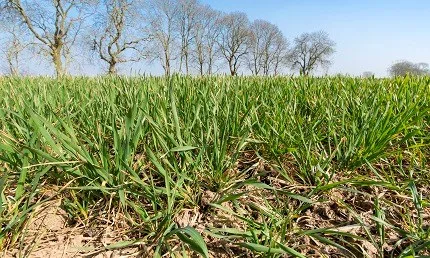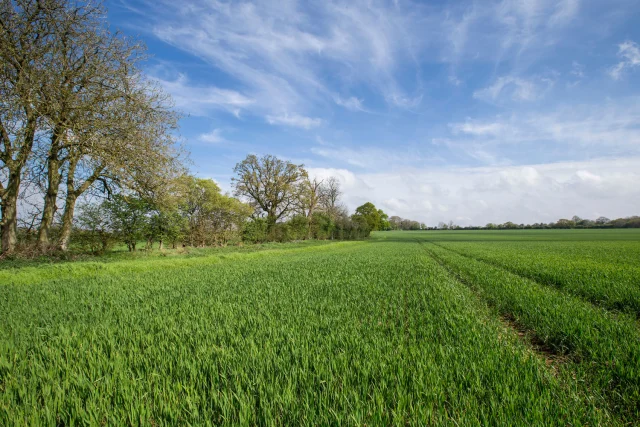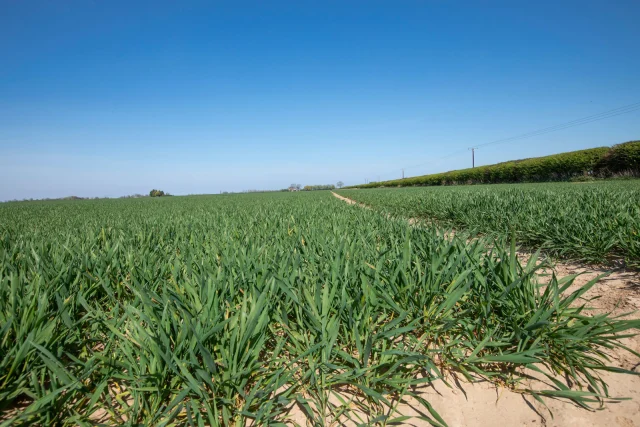Published on 1st March 2022
Local Insights
Six useful tips for growers in the west this March

Get the latest insight and expert advice for your farm as Gareth Bubb outlines his agronomic advice for March.
Six useful tips for growers in the west this March Content
Crop Progress
Oilseed rape was starting to move as we approached the end of February – a lot of it is looking good, but there’s also a lot of club root in the west, especially in Shropshire.
Unfortunately, in some cases it seems to be present in tolerant varieties – Chrome and Crossfit – which probably means the strains of clubroot that they are tolerant to, are not the ones that are in the soil. I’m not sure whether it means we have selected for these other strains. There’s not much you can do other than giving them all the help you can to get them away from it.
I’ve also seen quite a bit of cabbage stem flea beetle in crops, but it is mostly in side branches. As we get more into March we will know whether these crops will succeed or fail. But even if you have low yielding crops of oilseed rape it is probably worth carrying on with it to get what yield you can, with the current high commodity prices. More poorer crops are likely to be viable this season, when in other years they might not be.
Wheat is looking generally good – there’s bits of Septoria, and I’ve heard reports of yellow rust but haven’t seen any yet myself. But the most prominent disease is mildew, which virtually every crop seems to have – whether it is a problem is another matter.
I’ve also heard reports of mildew in winter barley, and also brown rust. Remember brown rust is a different beast to that in wheat, but there are more options to control it. Generally again, crops are forward and lush, which is great for barley as you don’t get high yields from a thin barley crop.
Gareth’s agronomy tips for March
1. Concentrate on tiller retention in winter barley
The name of the game in winter barley is tiller retention – to maximise yield in barley you need to maximise ear numbers. If disease or lack of nutrition begins to limit or threaten barley plants, they respond by aborting tillers.
That means in barley be more focused on the early part of the season for disease control. In my experience many growers start their barley sprays too late, and are surprised by the short intervals between timings as the first ones have gone on too late.
Usually, T1s should be around late March into early April at GS30/31 – not GS32 as in wheat. If you’re going to apply a T0, it should be around three weeks earlier in mid-March, when crops are reaching end tillering.
Classically that T0 spray could be cyprodinil-based, but it can be a bit harsh on the crop, so I think Proline (prothioconazole) could find more of a slot in that timing. It will cover mildew, net blotch, Rhynchosporium and brown rust.
Those are also the key diseases to cover at T1. This season, Ascra (bixafen + fluopyram + prothioconazole) is new to winter barley, as well as the option of Siltra (bixafen + prothioconazole).
Ascra is a little bit stronger than Siltra, but you can only use it once in the programme. I would use it at T1 on the majority of barley crops, because of tiller retention, but it also has activity on Ramularia so if you want to use it for that, you could swap the Ascra to T2 and use Siltra at T1. I’m just not convinced controlling late season Ramularia is going to as directly related to yield as keeping disease out early and retaining tillers.
2. Target yellow rust at T0 in wheat
T0 sprays, likely due at the end of March, should be primarily aimed at yellow rust.
Yellow rust has a short latent period, so while it may not be there one day, it could be very soon after. My advice is that if I know a variety definitely doesn’t get juvenile yellow rust, I wouldn’t bother spraying, but if it does or I’m not sure, I would be spraying even if there isn’t any visible rust in the crop, unless you’re willing to check the crop daily.
Tebuconazole would be the likely product of choice for this application. Remember if rust is present it will likely get worse after spraying before it gets better.
3. Consider using new CropCheck service to assess disease risks
Expanding on our Rapid Disease Detection service from last season, this season’s CropCheck service includes testing for latent infections of Septoria and yellow rust in winter wheat, Rhynchosporium and net blotch in winter barley, as well as light leaf spot and other diseases in oilseed rape.
The CropCheck service in wheat and barley uses PCR analysis of the leaf to assess whether a disease is present in the leaf before it is showing symptoms giving extra information to help you understand risk in your crops.
It’s important that it’s not used as the only part of your decision-making process though – it is only a snapshot in time and all the other factors you would normally use to help with decision-making, such as variety choice, weather, drilling date, etc., are equally, if not more important.
To register your interest in CropCheck click here.
4. Take your opportunities to control weeds in wheat
It’s difficult to know when the best conditions to apply mesosulfuron-based products in the spring for grass weed control will be in each season, but you can guarantee the longer you leave it, the bigger the weeds will get.
Generally, weed control from autumn residual herbicides has been good, but finishing off the programme is important to reduce weed seed return.
Apply mesosulfuron products to a dry leaf and actively growing crop, and avoid applying after lots of frosts, a prolonged cold or dry period and where there have been big differences in day and night temperatures.
Anecdotally, we’ve seen mesosulfuron-based products work best on days where there has been high sunlight intensity.
As well as weed size another reason not to delay applications is to avoid complicated tank mixes. It can be tempting to wait to do weed control, T0, growth regulatory sprays and trace element applications all in one go, but it will likely be harsh on the crop and compromise one or other of those applications. So just take opportunities when you can.
There are various product options. If you want a bit more grass weed activity than Atlantis OD (mesosulfuron + iodosulfuron), there’s Pacifica Plus (mesosulfuron + iodosulfuron + amidosulfuron) which also gives a bit more broad leaf weed control, or Monolith (mesosulfuron + propoxycarbazone) if you are targeting just bromes and not so much broad leaf weeds.
5. Continue monitoring for light leaf spot in oilseed rape
In oilseed rape around stem extension think about growth regulation, if needed, and doing something light leaf spot, if you haven’t sprayed for it recently. All you are trying to do is to keep it from getting onto the pods.
Proline is a good option for light leaf spot, while adding in tebuconazole will help with growth regulation.
Our SpotCheck service can help you assess risk until the end of March.
6. Consider Velum for potato cyst nematode control
Hopefully soil tests for potato cyst nematodes have been completed, and any cultural control practices, such as trap crops and varietal choice undertaken as needed in potato crops to minimise the risk from the pest. That leaves nematicides as the last line of defence.
In lower risk situations you can consider Velum Prime (fluopyram) on its own. In higher risk fields, Velum Prime isn’t as effective as the last remaining granular nematicide nemathorin, but our trials have shown benefits from mixing a half rate of nemathorin with full rate Velum in those situations. It’s also possible to mix full rates of both.



